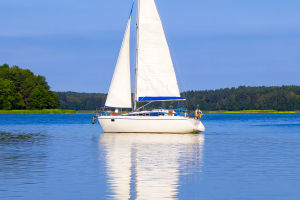Heroes in Orange
Lifebuoys are seemingly simple and unassuming objects indispensable in water-related activities and safety.
These tiny devices are crucial in life-saving during emergencies, promoting safety education, and providing psychological support.
This article delves into the multifaceted functions of lifebuoys, exploring their historical evolution, vital role in rescue operations, importance in disaster prevention, and their application in various environments.
History and Evolution of Lifebuoys
The history of lifebuoys dates back to the 19th century when they were initially made of cork. As technology advanced, manufacturers began using lighter, more durable materials such as polyethylene and EVA foam.
Modern lifebuoys are designed to be simple and efficient, typically round or donut-shaped, and covered in bright orange to enhance visibility in water. The buoyancy design has undergone numerous improvements to ensure adequate support in diverse water conditions.
The Role of Lifebuoys in Water Rescue
1. Providing Immediate Buoyancy: The primary function of a lifebuoy is to provide buoyancy, helping drowning individuals stay afloat. Its design enables quick and easy grasping, offering immediate support to prevent the person from sinking due to exhaustion.
2. Ease of Throwing and Carrying: Lifebuoys are designed to be easily throwable, allowing rescuers to toss them to a person in distress quickly. Modern lifebuoys often come with a long rope, enabling rescuers to pull the individual back to shore or a boat.
3. Enhanced Visibility: Typically brightly colored, such as orange or yellow, and equipped with reflective strips, lifebuoys are highly visible in the water. This Visibility is crucial in low light or adverse weather conditions, significantly increasing the chances of the lifebuoy being spotted and used effectively.
Application in Special Environments
1. Shipping and Navigation: Lifebuoys are essential safety equipment in maritime activities. All types of vessels, whether commercial ships, fishing boats, or yachts, must be equipped with adequate lifebuoys to address any sudden falls overboard.
The International Maritime Organization (IMO) mandates that ships carry lifebuoys according to the number of crew and passengers and ensure regular inspection and maintenance.
2. Water Sports and Recreation: Lifebuoys are indispensable for safety in water sports and recreational activities such as rafting, boating, and windsurfing. They protect participants and provide immediate assistance in emergencies, ensuring a safer environment for enjoying water activities.
3. Emergency Rescue in Natural Disasters: In natural disasters like floods and tsunamis, lifebuoys serve as crucial emergency rescue equipment. Rescuers can quickly throw lifebuoys to provide buoyancy support to trapped individuals and guide them to safety.
Psychological Support Provided by Lifebuoys
1. Psychological Comfort: The mere presence of lifebuoys can offer psychological Comfort to people engaging in water activities. Knowing that there is a life-saving device nearby can make individuals feel safer and more confident.
2. Reducing Fear: In emergencies, drowning individuals often experience extreme Fear and panic. The sight and use of a lifebuoy can alleviate some of this Fear, helping them to remain calm and increasing their chances of survival.
Conclusion
Though seemingly simple, lifebuoys play an irreplaceable role in ensuring safety during water activities. The advancement of technology promises further innovation in lifebuoy design and functionality, ensuring that they continue to be an essential part of water safety measures.
Lifebuoys are crucial in safeguarding lives in daily recreational activities or emergency rescue operations.


